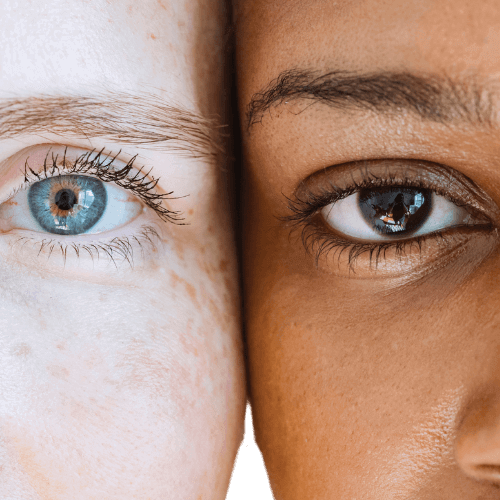
In March 2023, President Biden signed an executive order establishing the White House Initiative on Women’s Health Research. The order proposes a grant of $12 billion to address a problem plaguing medical science and practice for decades, coming from the inequalities in research and practice between men and women, or to put it in simpler terms – a gender-based health gap.
The under-representation of women in medical research has been a persistent issue, leading to significant gaps in the understanding of how various diseases and treatments affect them. This disparity has been highlighted by both researchers and policymakers who advocate for more inclusive studies to ensure that medical findings are applicable to all segments of the population.
Historically, policymakers have recognized the need for inclusivity in medical research. In 1993, the National Institutes of Health Revitalization Act was passed, mandating the inclusion of women and minorities in NIH-funded research. This legislation aimed to ensure that clinical studies reflected the diverse U.S. population. However, as I explain further down, there were barriers to including women in the majority of clinical trials of new drugs. So, even with the best of intentions, the situation hasn’t changed much for over 30 years, and the gender-based health gap has not just persisted but, in some instances, is becoming even more pronounced.
Despite these initiatives, challenges persist. A 2024 article in Time highlighted that women are still underrepresented in medical research, with significant gaps in clinical trials across various medical fields like oncology and neurology. The article emphasized the need for more funding, targeted research, and integration of gender differences into medical practice and education to improve women’s health outcomes.
Fact #1: Data about women is lacking

As a result, there is a tremendous gap between the data available on the effect of drugs on men and women. One direct consequence of this is that many new drugs are only tested on men (and even lab mice are predominantly male) and carry the warning that they are not recommended for women.
Until this situation is corrected (and in the age of Artificial Intelligence, Machine Learning, and digital twins, this is not such a major problem), the gender-based health gap will be perpetuated.
Fact #2: Women are less likely to receive proper treatment than men for common diseases
Heart disease is the leading cause of death for men, women, and people of most racial and ethnic groups, according to the Federal government’s Center for Disease Control. A great deal of research goes into identifying the risk factors and outcomes. Still, very little of this goes into distinguishing the influence of gender, focusing mainly on ethnicity, age, diet, weight, and many other factors. However, doctors who deal with women every day in hospitals and consulting rooms identify that heart failure becomes more common for women in menopause and kills more women than any other condition.
Research shows that men and women often receive different treatments for heart failure, leading to disparities in outcomes. It indicates that women are less likely than men to be prescribed certain heart medications. For instance, a study highlighted that women were significantly less likely to be prescribed statins and ACE inhibitors compared to men.
Additionally, women with cardiovascular disease were found to be 35% less likely to be prescribed preventive aspirin therapy, even after adjusting for factors like ethnicity, age, income level, and insurance status.
These disparities contribute to suboptimal treatment and outcomes for women with heart disease compared to men. The American Heart Association has noted that cardiovascular disease in women remains understudied, under-recognized, underdiagnosed, and underrated.
Putting all this into the starkest terms, it’s twice as likely that a woman presenting with recognized symptoms of a dangerous heart attack (ST-segment–elevation infarction) will die in the emergency room than would a man with exactly the same symptoms and history.
Pain is the most common problem that brings people into the doctors’ waiting rooms, but here again, there is a distinct gender-based health gap in both the examination of symptoms that women can expect to receive and the treatment (if any) that is likely to be prescribed.
There is also evidence that doctors treat men and women differently both in the examination rooms and when intervention becomes necessary. In one study, healthcare professionals were found to have given different messages to men and women reporting chronic back pain. “Be careful” messages were more often given to women, while “pain goes with heavy work” was more often given to men. Some claimed that, to a greater degree than men, women are used to internal pain because of menstruation and childbirth, and some researchers connected this to the concept that pain without an external cause is a natural characteristic of women’s bodies.
Fact #3: Treatment focuses on men at the expense of women
Some ideas persist despite more than half a century of theoretical gender equality in all aspects of American life.
Women are more emotional than men when it comes to reporting pain. A study entitled “‘Brave Men’ and ‘Emotional Women,’’” published in 2018, reported that people appear to learn to handle the pain from their environment and social interactions when growing up. “Boys and men are taught to be tough, tolerate pain, and sustain painful experiences, while girls and women are socialized to be sensitive, careful, and to verbalize discomfort.” This can lead to healthcare providers treating men and women differently, in the belief that men are “bravely” holding back on reporting their pain and may, in fact, be in greater need of treatment. In contrast, a popular conception is that women are exaggerating the level of pain and can be more safely left to wait for treatment.
Fact #4: The gender-based health gap widens with advancing age

For example, it’s widely acknowledged that older people are more likely to experience severe pain from arthritis, but the degree of difference between men and women has never been properly investigated. It gets worse because what little is known about the workings of the existing therapies for arthritis is of limited value in the case of older people because they were not represented in the clinical trials of the newer drugs (no one over the age of 65 was included), and so everything about them is guesswork.
As recently as during the COVID-19 pandemic, a tremendous effort was put into conducting population studies to get a better understanding of the virus and the vaccines. However, out of ten countries that conducted such studies, only three analyzed the data on the basis of differences relating to gender and age. This made, in the words of the author of the article we cited above, “women aged 65 years or older largely invisible and their unique care needs unmet.”
Summary
As of now, we’re in limbo, waiting to see if the federal government will continue the Initiative on Women’s Health Research. The question remains—will it provide the funding and incentives needed to start closing the gender-based health gap? In the meantime, we can all keep ourselves aware that this is not a problem that we have to live with, and there are steps we can take as individuals to make sure that our own health isn’t suffering as a result of this problem.














